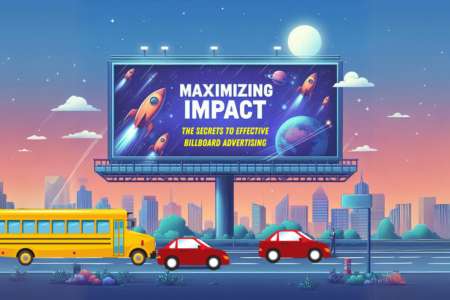In today’s rapidly evolving advertising landscape, successful campaigns require a comprehensive strategy that spans both physical and digital platforms. One powerful approach that has gained traction in recent years is the integration of transit advertising with digital campaigns. This dynamic combination allows brands to reach a wider and more engaged audience while effectively conveying their message. In this blog post, we’ll explore the benefits and strategies of this cross-platform advertising approach.
The Power of Transit Advertising
Transit advertising, whether it’s on buses, subways, trains, or other forms of public transportation, offers a unique opportunity to capture the attention of a diverse and captive audience. Commuters and travelers tend to spend a significant amount of time in transit, providing ample opportunities for brands to make an impression.
Benefits of Transit Advertising:
High Visibility: Transit ads are often large and prominently displayed, making them hard to ignore. They offer great visibility to both pedestrians and other commuters.
Targeted Exposure: Ads can be strategically placed in areas that align with a brand’s target audience, ensuring a higher likelihood of engagement.
Local Impact: Transit ads can be highly localized, allowing businesses to connect with their immediate community.
Frequency: Commuters tend to see transit ads multiple times, increasing brand recognition and recall.
The Digital Edge
On the other hand, digital advertising is a robust tool for reaching a broad online audience. It offers detailed targeting options, real-time performance tracking, and the ability to adapt campaigns on the fly. Combining these strengths with transit advertising creates a powerful synergy.
Benefits of Digital Advertising:
Precise Targeting: Digital campaigns can be fine-tuned to reach a specific demographic or location, making them highly effective.
Measurable ROI: Real-time analytics allow advertisers to measure the impact of their campaigns and adjust them for better performance.
Engagement Opportunities: Digital ads can lead consumers to interact directly with brands through websites, social media, or other online channels.
Integration Strategies
To successfully integrate transit ads with digital campaigns, consider the following strategies:
Consistent Branding: Ensure that your transit ads and digital creative maintain consistent branding elements, such as logos, colors, and messaging. This fosters a cohesive and memorable brand image.
QR Codes and Short URLs: Incorporate QR codes or short URLs on transit ads, allowing commuters to easily connect to your digital platforms for more information or special offers.
Social Media Engagement: Promote your transit campaign on social media and encourage users to share their experiences or photos using a branded hashtag. This extends the reach of your campaign.
Geofencing: Use geofencing technology to target digital ads to users who have recently encountered your transit ads. This reinforces the message and encourages action.
Data Integration: Leverage data from both transit and digital campaigns to refine your targeting and messaging, ensuring your efforts are more effective over time.
Measuring Success
To evaluate the success of your integrated cross-platform advertising campaign, track key performance indicators (KPIs) like increased website traffic, social media engagement, app downloads, or in-store visits. Additionally, use surveys and feedback to gauge brand awareness and customer sentiment.
In conclusion, the integration of transit ads with digital campaigns offers a holistic approach to reaching and engaging your target audience. By combining the advantages of high-visibility transit advertising with the precision and interactivity of digital marketing, brands can create a more impactful and memorable message. Embracing this cross-platform strategy can lead to increased brand recognition, customer engagement, and ultimately, improved ROI.










